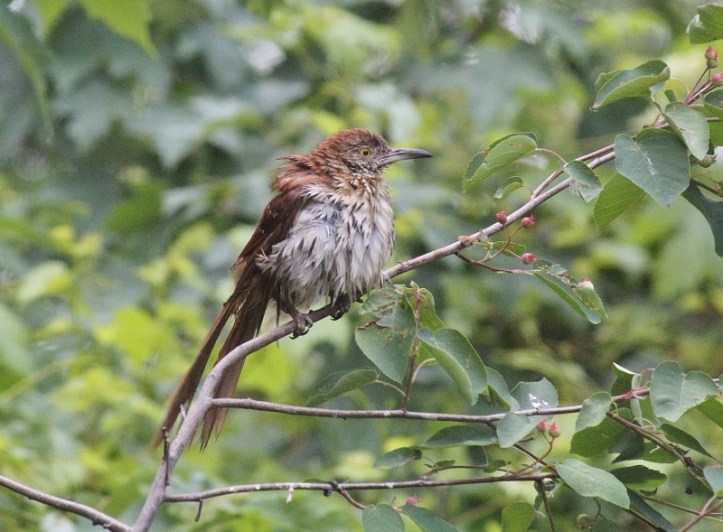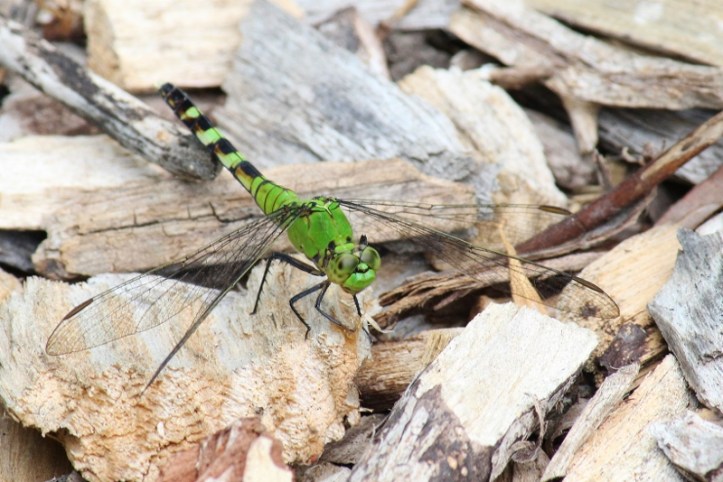
Ok, first things first: No, I didn’t fall off the face of the earth. Although I do feel like I’m sort of in the twilight zone lately, what with all the craziness in the world. Violence, hatred, and sadness seem to permeate everything these days, and I’ve been struggling with mustering up the motivation to write anything. My personal life has been challenging in the past several months as well, so I’ve basically just been trying to get through it one day at a time. But after a couple friends mentioned that they’ve missed my blogging, I decided to try to find something positive to write about and get myself back into a more cheerful state of mind.


So…welcome to “Thrashers, Dashers, and…Mayflies,” my attempt to use nature to heal the parts of my heart that have been hurting. I’ve been regaining some of my enthusiasm for photography too, thanks to a hot summer loaded with dragonflies. Just when the birding gets really slow in the breeding season, the dragonflies come out in force, giving me plenty of opportunities to try for better photos of these fast-moving and skittish insects.

All of these photos were taken at Magee Marsh Wildlife Area in Oak Harbor, Ohio. During springtime, this area is a world-renowned hotspot for songbird migration, but in summer it’s virtually deserted. Or, I should say, there are very few people here, but there’s still an enormous amount of life happening here if you’re willing to look for it.
One recent day I spent some time on the Magee Marsh boardwalk with a couple of friends, just taking pictures of dragonflies — and mayflies (but more about them in a moment).
I’m fascinated by dragonflies — Odonata for the scientifically-minded — but I’m certainly no expert at identifying the various species. I have a couple of field guides and make my best guesses, but that’s about it. For example, the picture above I’ve labeled an immature Eastern Pondhawk. The females and immature males are a bright green, but at about a week of age, the males begin to turn blue, first on the abdomen and then on the thorax. The color change takes a couple of weeks, so this guy is perhaps two or three weeks old. Here’s a closer crop of this photo, just because I love looking at their intricate body structures.

And this next picture shows the difference between the completely green female (or immature male) and the immature male that is in transformation to blue. I don’t know how to determine if the one on the left is a female or young male, but it really doesn’t matter to me. All I know is that he/she is gorgeous!

And another one, taken just outside my office on an unbearably hot day:

Oh, let’s not forget the mayflies. Being new to this area, I’d never witnessed a mayfly hatch before. I started hearing people mentioning how there are so many of them that they cover houses and pile up in rotting mounds of carcasses everywhere. I thought they were exaggerating until I saw it for myself. Unfortunately I didn’t take any photos of them covering buildings, but if you want to see some examples, check out this Google image search. Ick, ick, ick. Can you imagine having to walk through those piles, or having to clean them off your house?
There were days last month when I’d walk outside the office to my car, and come back inside with a dozen mayflies hanging on my shirt. That might sound creepy to some, but they’re harmless (they don’t even have any mouths in their adult form, so they can’t bite), and they’re pretty darn cool. They begin life as aquatic insects, and once they emerge as adults with wings, they only live about a day, just long enough to mate.
Mayflies belong to the order Ephemeroptera, which apparently comes from the Greek words ephemera meaning “short-lived” and ptera meaning “wing.” And I read on the Freshwater Blog that Mayflies are an important food source in parts of Africa, where they make protein patties out of them. Interesting, isn’t it?

This next picture was taken on the Magee Marsh boardwalk after most of the mayflies had died. If you look closely you can see all the dead mayflies piled on the boardwalk and hanging from the railings. It was really something to see.


Although there is one insect that I met recently that left a much different memory than the mayflies. I had my first encounter with chiggers a few weeks ago, when I naively walked around in the long grass outside the office and woke up the next morning with dozens of swollen bites all over my body. I’ve been bitten by fleas and mosquitoes many times in my life, and I thought I knew what misery was. But those chiggers ravaged the most tender spots on my body, and I thought I was going to lose my mind for about two weeks until they finally stopped itching. I wouldn’t wish that on anyone!
In about two weeks I’ll mark the one year anniversary of my move to the flatlands of northwest Ohio. Time has really flown by this year. I’m learning a lot about the natural world as I experience the seasons in this new landscape. But I’m still learning things about myself as well. I’ve discovered that I’m braver and stronger than I ever thought I could be. I’ve discovered that I can still allow myself to love and be loved, to have my heart broken and be able to get up and put a smile on my face and try again. And I’m so proud of me. 🙂

[…] Thrashers, Dashers, and Mayflies (July 2016) […]
LikeLike
Kim I have missed your beautiful photography and passion for nature. The dragonflies are amazing and magical to watch. I hope life bounces back soon and you feel better. Thanks for sharing your wildlife I always look forward in seeing your world through your lens.
LikeLike
Oh thank you for saying that, Kath! I’ve missed writing too, so I hope to get back into the swing of things very soon.
LikeLike
Look forward to reading it when you do.
LikeLike
Being in nature helps me cope and I know it will help you as well. Get out and discover!
LikeLike
Yeah, it’s amazing how time spent in nature can soothe the soul. I’ve known this for a long time, but sometimes forget to take advantage of it when I should.
LikeLike
Sometimes it’s hard to find the time…
LikeLike
Very nice article-i am not into insects but the green dragonfly is really cool. Glad you are back on Facebook. Missed your articles!
LikeLike
I am glad to see you back… and you never disappoint with an educational post! I remember about four years ago I photographed many beautiful dragonflies and became fascinated with them. I haven’t seen that many since. But then, perhaps I’m just too busy to notice!
I have noticed many bloggers (myself included) have not been writing much lately. Summer is like that – and life is like that. I miss writing… and I miss your writing. Maybe one day we both will be able to dedicate more time to it. Above all, be happy, my friend! 🙂
LikeLike
Thanks, Lori! I really miss being in touch more often. I hope you’re right about summer, and we’ll both feel like writing more toward the fall. I know it just feels too darn hot to do much lately. I’m sure it’s even hotter in Oklahoma than it is up here in Ohio too!
LikeLike
Thank you, I sure needed this blog. As a HSP this world is taking me down and living here in AZ with soaring record breaking temperatures is not helping! I live here only because of my grandchildren are here and I can not bring myself to leave them. I missed you and your blogs, these always lift me up and help me remember living in Ohio. Take care.
LikeLike
Sharee, thank you for telling me that my writing helps you cope. That means a lot to me! I hope you have a good plan for staying cool as the temperatures continue to climb.
LikeLike